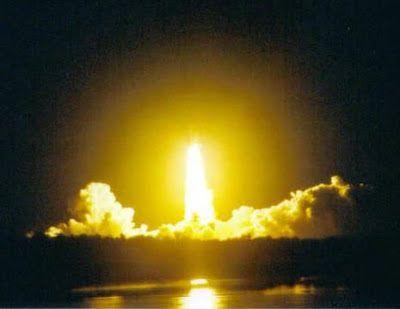“I want to work in the space industry
in the US but I’m not a US citizen. What can I do?”
I get this question a lot from students
and professionals from all around the world. I still don’t have the
best answer for them. I can sense their eagerness to get involved in
an industry we love and their frustration at the barriers. It’s
especially heartbreaking to hear from non-citizen students studying
in the US who want to find a space job and stay, but can’t.
Two years ago, I was quoted in the
Orlando Sentinel saying, “It's really frustrating. These were
students who came to the U.S., were trained here. So we spend the
resources, the time to train people in highly educated, high
in-demand fields, and then they take that and leave.”
In most cases, they don’t want to
leave. Without a job, they have no choice.
First, some basics. People around the
world dream of working for NASA. As a federal government agency, only
US citizens can be employed as civil servants at NASA. I know of many
NASA employees who became US citizens at some point in their career
journeys and now work for NASA.
NASA employs many more contractors than
civil servants. These contractors are small and large businesses,
suppliers, service providers, universities, and nonprofits. These
contractors work at NASA centers and facilities or on NASA projects
at their employer’s facilities. I’ve never been a NASA civil
servant but I have worked as a contractor or subcontractor at 3 NASA
centers.
Citizenship requirements are set by the
contractor. Many require US citizenship, especially engineering
positions that are restricted by the International Traffic in Arms
Regulations (ITAR). But some contractors do not require US
citizenship. Universities and research-focused nonprofits are most
open to hiring internationally.
Many commercial space companies in the
US are restricted by ITAR as to who they can hire. Some of the larger
companies with international offices and partnerships may have
procedures in place to hire non-US-citizens. Some smaller companies
may also hire non-US-citizens if they have no reason to restrict
their hiring or if they have ties to another country.
For example, Rocket Lab is an American
company with a subsidiary company and significant operations in New
Zealand. They have strict citizenship requirements for US-based jobs
but more open citizenship requirements for NZ-based jobs.
Consider your home country and
surrounding countries. Are there opportunities to get involved in
space closer to home which can help you get your foot in the door in
the industry? You may find the space career you seek without having
to leave your own country or the surrounding region. Or you may find
it easier to move around from location to location once you are
already working in the industry, building experience, and making
connections.
Another option, open to some, is to
become a student in the US. This is becoming a more difficult route
to take, but if you have the ability to study in a US university with
the proper paperwork, you can go down the path of finding a company
to help sponsor your green card and give you time to become a
citizen. But this brings me full circle back to my quote in the
Orlando Sentinel – it’s difficult to find a space job willing to
hire a non-citizen student or recent graduate.
Another option, which I generally don’t
recommend, is to obtain a non-space job in the US in order to become
a US citizen. This would then allow you to more easily find a space
job in the future. In
part 3 of this series, I describe how to switch
from another industry to the space sector.
Please know there may be many
places around the world where you can pursue your space career. Some
countries have rich histories in space and some newer players have
fast-growing space sectors. You may be able to pursue your space
career in unexpected places.




